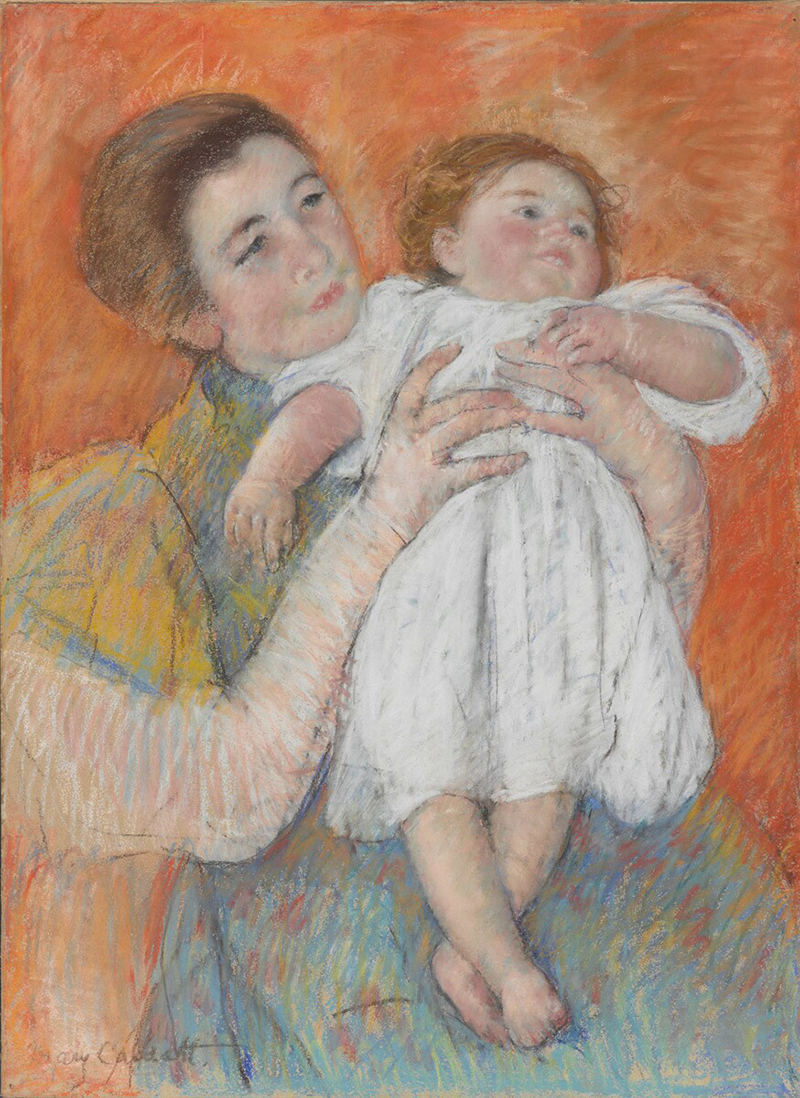Object of the month: "The Barefoot Child," 1897
By Bowdoin College Museum of Art
The Barefoot Child, 1897, pastel, by Mary Cassatt, American, 1844–1926. Gift of Mrs. Murray S. Danforth, in memory of her husband, Dr. Murray S. Danforth, Class of 1901. Bowdoin College Museum of Art. 1953.42
Mary Cassatt’s Barefoot Child was created in 1897, during what art historians refer to as her “mature period” that spanned from 1887 to 1899. Cassatt was born in Allegheny City, Pennsylvania, but spent her early years with her family in France and Germany. In 1877, Edgar Degas invited her to join the group of independent artists later known as the Impressionists. Cassatt was the only American officially associated with the group, and her work was exhibited alongside that of Claude Monet, Pierre-Auguste Renoir, Camille Pissarro, and many others.
Cassatt’s focus on depicting maternal relationships in her work reflects larger cultural shifts in contemporary society, following a movement in France to provide children with more rights and protection. In 1874, France banned child labor under the age of 12 and, in 1881, laws were established to provide all children with free, secular elementary education. The child began to be viewed as a life that needed to be nurtured and protected rather than disregarded until adulthood. Before this point, for most of the nineteenth century, half of all children in Paris were breastfed by wet nurses instead of their mothers. This new social movement pressured upper-class women to be more involved in their child’s upbringing, thus putting Cassatt’s depictions of mother and child in context with changing attitudes toward maternal relationships.
During this time, Cassatt’s everyday scenes of domesticity became extremely popular. Cassatt was especially interested in capturing life in its unposed and natural state. As such, Cassatt portrayed children being held, dressed, bathed, nursed, among other daily activities. These natural depictions of women and children reflected advanced Parisian ideas about maternity. The iconography in The Barefoot Child might call to mind images of the virgin and child yet provides a modern Parisian twist. The child is held up in a loving embrace in the arms of the woman who presumably is its mother. However, there seems to be a stronger connection than just a posed scene for a picture. Cassatt creates a sense of relaxed intimacy between the subjects, as if we are viewing one of the “in between” moments of child rearing. This idea of “in between” moments or temporality is also suggested in Cassatt’s fleeting upward brush strokes that create movement in the subjects.
Cassatt also uses bright hues to emphasize the “glow” of parenthood, and one possible interpretation might connect these bright jewel tones to the “holiness” of the infants’ bodies as a potential callback to the baby Jesus. The reddish orange colors surrounding the subject draw attention to the scene, highlighting the blush on the child and mother’s faces, emphasizing the emotions between parents and children. Furthermore, the fact that this nonreligious mother-child scene could take center-stage without the need for additional background, setting, or characters reflects the importance of these moments in child rearing and the importance of matriarchal relationships in modern life. Cassatt's mothers are capable, intelligent beings who consider motherhood an important period of their life development. Mary Cassatt’s ideas about the duties and importance of motherhood are reflected in many paintings similar to this, pushing Parisian society to think differently about the role of a parent in a child’s life.
Tessa Frank ’23
Summer Education and Shop Assistant